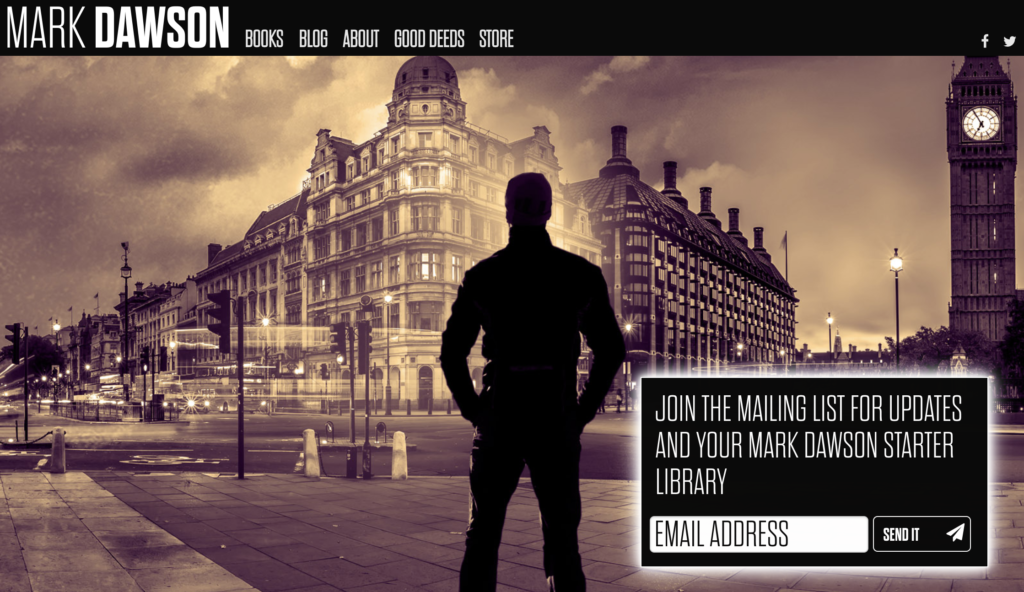The digital marketing landscape is constantly evolving, and 2021 looks to be no different. The recent update from Apple has made it more difficult for Facebook to track users on iOS devices (a decision that has led to dramatic changes in Facebook’s advertising ecosystem), and Google is in the process of rolling out a new update that will change how the search engine ranks different websites. With all of the change, marketing methods that are consistent are more valuable than ever. And, these days, the king of consistency is email.
When you have someone’s email address, you have a direct line to them. There’s less reliance on the whims of another company or if someone will log into a social media platform.
Additionally, email creates some of the most reliable behavior out there. Ninety-nine percent of people check their email every day, and we don’t expect to see that change any time soon. So if you want someone to see your message, sending an email is simply the best way to ensure they do.
Most importantly, signing up for an email list signals intent. This means that a reader who signs up for your list is showing direct interest in your author brand and an intent to learn about you and/or buy more of your work. They want to know when you have a new book, what you are working on next, or if you’re hosting an author event. In other words, when a reader chooses to join your email list, you have a likely customer on your hands. And that is valuable.
User behavior with email is consistent, but that’s not the only benefit of email as a marketing tool. Email is one of the few ways to reach readers that authors have near complete control over. Fewer design restrictions than ad platforms, control over what time an email is sent to readers, and control over the email’s content mean that authors can communicate exactly how they want.
Email lists are valuable marketing tools, but it’s not as simple as deciding to turn on the email form on your author website. You’ll have to put in some work in order to grow your email list. With that in mind, here are five ways to build an email list for authors.
Build a lead magnet
This is one of the most common list building techniques out there, and for good reason: it works.
When you build a lead magnet, you offer readers something they want in exchange for joining your email list. For example, you could have a page on your website titled “short story giveaway” where readers can enter their email address. After the reader signs up, they are sent an automated welcome email from your email provider that contains a file or a link to a free short story that you’ve written.
It doesn’t have to be a short story. Readers could be entered into a drawing to have early access to a new release, a free eBook, or a chance to have their questions about the author and/ or characters answered. If you have something that readers want, there’s a solid chance it will make a good lead magnet.
Optimize your website
You will miss out on a lot of signups if readers cannot easily join your mailing list. Readers who show interest by visiting your author website are prime candidates to join your mailing list, so make sure it’s easy for them.
Many authors, like Mark Dawson, will even put their email signup form on their homepage.
When you visit Mark’s website, it’s clear that he wants readers to join his mailing list before doing anything else.
His homepage consists only of an email signup with a lead magnet (a starter library), a large image, and a menu at the top of the screen.
If readers want to visit his blog, about page, or browse his books they easily can. But the site draws your eye to the email signup so that it’s almost impossible to miss.
If your website allows it, we recommend setting up Google Analytics or another tracking tool to help see how users interact with your site. You can see what percentage of visitors to your site are joining your list by setting up a conversion goal for email signups. Is the percentage very low? Try moving the signup, making it easier to find, or offering a lead magnet.
By trying new things on your site and monitoring how your numbers change, you can improve over time and get the most signups for your list as possible.
Optimize your backmatter
This is simple advice, but it matters. Make sure readers know how to get to your website when they finish your book.
Some authors will put their site in large font in their backmatter, others will include a heartfelt ask for the reader to join their email list. However you decide to go about it, make sure all of your books include your website URL, and put in some serious thought about what will make readers more likely to visit.
Backmatter is a great opportunity to reach readers while they are primed to engage. If someone is reading your backmatter, chances are they just read your entire book. There’s no better time to ask them to visit your website.
Another advantage of optimizing your backmatter is it is free and fairly easy to do. Moving signup forms around your website or setting up a lead magnet can take a little work, but adding a URL in your backmatter is a fairly simple task. That puts it in the all valuable “low effort, low cost, but high impact” marketing category.
Utilize your social media
A common way for readers to find authors is to look them up on social media. It’s just easy, and we’re all used to doing this.
While someone liking your Author Facebook Page or following you on Twitter is great, it’s still not as valuable as having their email address. So, make sure you are posting links to your email signup, linking to your website in your bios, and promoting your lead magnet on your social media pages.
Readers that follow you on social are prime candidates to join your email list. So make sure they know about your list, and why they should join.
Refine your email strategy
Easier said than done. Once someone joins your mailing list, you want to keep them. Some unsubscribes will always happen, so it’s not worth stressing too much, but you should ensure that you don’t do anything to push people away.
Don’t send too many emails. Every author will have to decide how much is too much, but by emailing your list too often, you risk overwhelming your audience. Try to limit your sends to when you have something to offer your readers. A new book, a giveaway, or a price reduction are all great reasons to send an email to your list.
But, a weekly writing update or inspirational quotes might be too much for some readers, and they will unsubscribe.
Every audience is different, so you are best positioned to know what will work for you. Some readers may want a weekly email, so if you want to give it to them, allow them the option of joining the weekly list.
For those authors that don’t want to send many emails, simply waiting for a new release or price promo is a good strategy that readers will appreciate.
Building an email list takes time and effort, but it’s well worth it. By owning a list of your dedicated fans, you can give inexpensive boosts to new releases, generate needed reviews, and beef up the results of your price promotions.
Do you have an email list? How do you get readers to join? Let us know in the comments below.


Thank you so much.
Do you by any chance know what website creation program Mark Dawson used to create his website? Thank you.
Hey Heather, I believe his site is built on WordPress, but it is heavily customized. Check out this post for more website builder options.
It was a custom agency job based on WordPress.
While I understand the importance of creating an email list, how does one get readers to my website to see the sign up list? It seems to me that you need a following to create a larger following. There’s got to be an easier way to create an email list.
Hey Gillian, Yes getting readers to your site is critical! Advertising a lead magnet on social networks, putting links in your back matter and asking current readers to share your site with friends are some ways you can do this. But, there’s no magic sauce that we’ve discovered so far. It takes work and time.
I built my email list using group book promotion services like Bookfunnel, Story Origin & Bookcave.
Thanks. I appreciate the practical tips. I do not yet have a mailing list. Where do the names go when after a person signs up? In other words, how will I find them and manage the names? How does the backend of e-mail lists work?
Hey Ilona, those will be stored in your email service provider. So if you use Mailchimp, they will be in your mailchimp account.
Thank you for your valuable information!!!
Great article for us old-author fossils who grew up writing letters and hanging out on phone calls! Any resources out there for SEO work for authors?